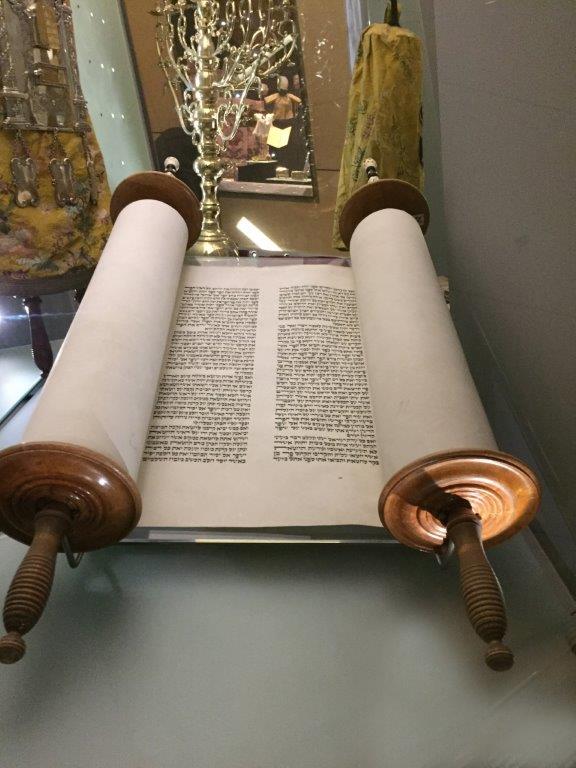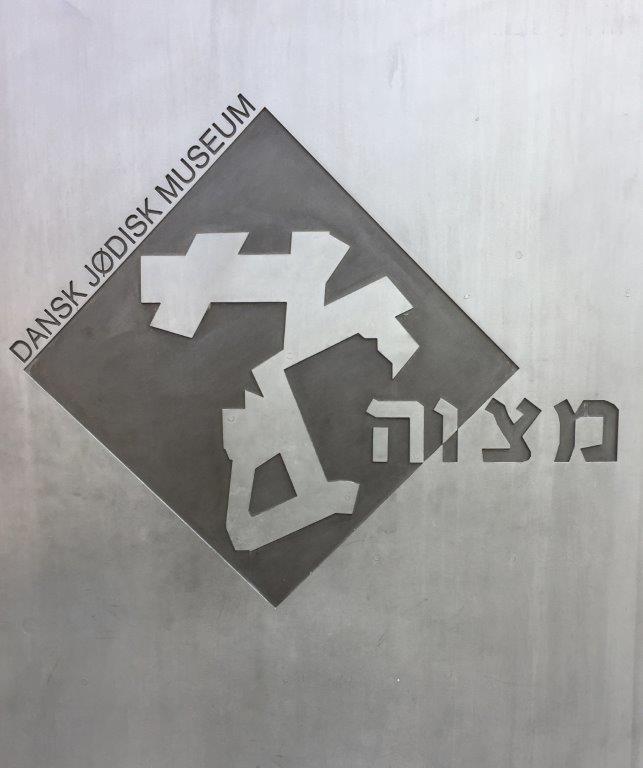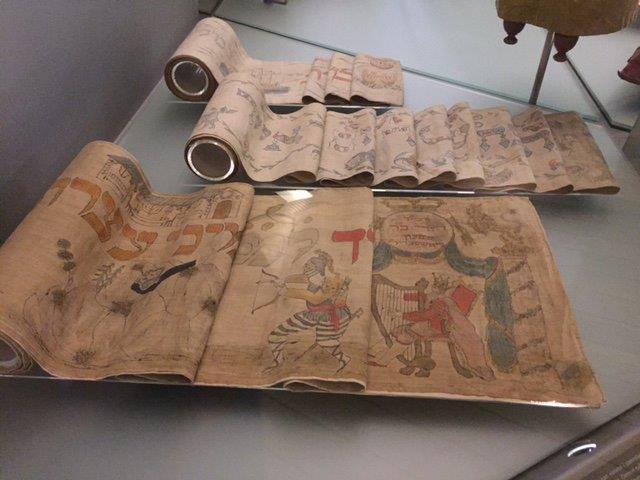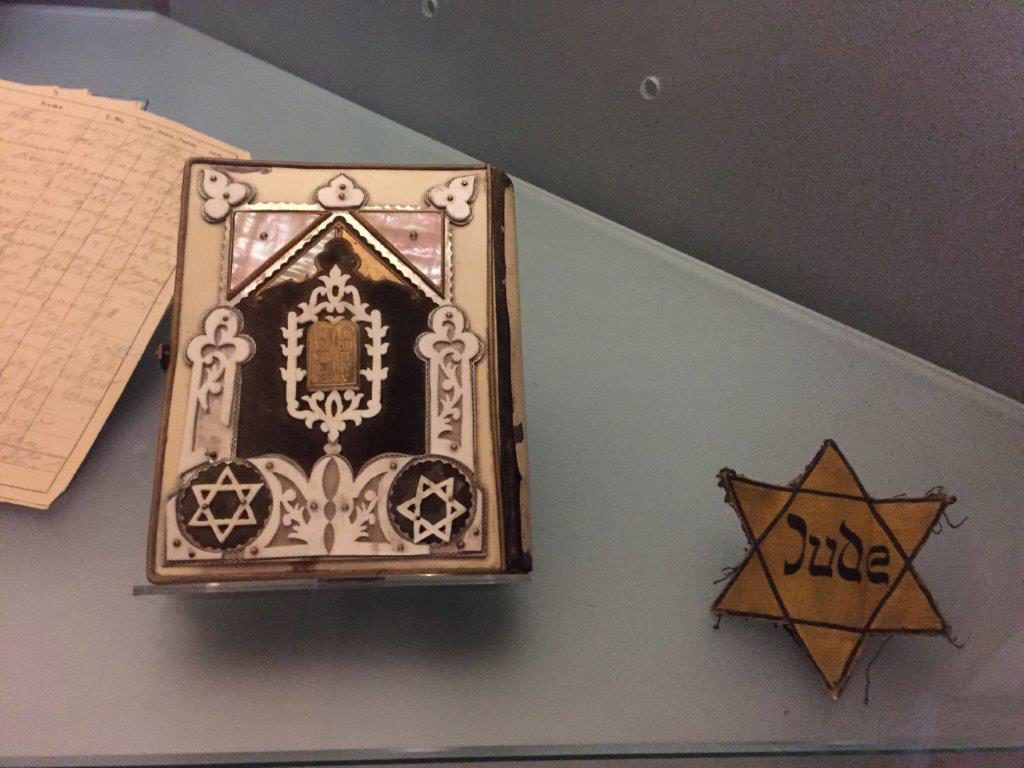
Text and photos by Mary L. Peachin
Vol. 22, No.3. December 2018
Seriously concerned about safety, many of Europe’s synagogues and museums have layers of security required in advance in order for visitors to obtain admission. This is not the case in Copenhagen. While the small Museum’s unique surroundings have it discreetly tucked adjacent to the Royal Library, the door is open. A single police car is parked along the street. Copenhagen’s Danish Jewish Museum’s displays 400 years of history including World War II’s dramatic rescue of the Danish Jews.
 Architect Daniel Libeskind unique space is built within an historic space. During the seventeenth century King Christian IV built the Royal Boat House. In 1906, the Royal Boat House became part of a new building, and the Royal Library opened in the space. Near the end of the twentieth century, the Royal Library was refurbished including the extension of the Black Diamond. The Black Diamond, or Den Sorte Diamant, is a modern waterfront extension. Its nickname is a reference to its polished black granite cladding and irregular angles.
Architect Daniel Libeskind unique space is built within an historic space. During the seventeenth century King Christian IV built the Royal Boat House. In 1906, the Royal Boat House became part of a new building, and the Royal Library opened in the space. Near the end of the twentieth century, the Royal Library was refurbished including the extension of the Black Diamond. The Black Diamond, or Den Sorte Diamant, is a modern waterfront extension. Its nickname is a reference to its polished black granite cladding and irregular angles.
Today, the Danish Jewish Museum layers reflect Danish-Jewish history.
Libeskind describes its corridor of walls, inner spaces, as one showcasing texts such as the Talmud that is shaped in the form of the Hebrew letters from the word Mitzvah. Museum’s guests enjoy a sensory experience as they walk between the four huge letters viewing the exhibition. Light wood wall casing is a reference to its Nordic history, while sloping floors symbolize high seas. Another reference to Mitzvah are luminous glass windows cut into walls.
Libeskind explains, “The Danish Jewish Museum will become a destination revealing deep tradition and the future in the unprecedented space of Mitzvah. The intertwining of the vaulted brick old structure of the Royal Library and the unexpected connection to the unique exhibition space creates a dynamic dialogue between architecture of the past and of the future – the newness of the old and the agelessness of the new.
The history of the Jews in Denmark traces back 400 years to the 1620s when families from Hamburg and Amsterdam first settled. Other Jews migrated in the 1920s to the United States from Eastern Europe. Others chose Copenhagen because they could not afford the journey to America. The small minority group that remained in Denmark made significant contributions to the economic, political, cultural and scientific development of the country. The rescue of the Jews during World War II is an important chapter in both Jewish and modern Danish history.
 Between 1588 and 1648, King Christian IV invited Sephardic Jews to Denmark. Hoping to increase trade and economic growth, the majority of arrivals were successful merchants from Amsterdam and Hamburg. It was simply a matter of trading extensive trading privileges for freedom from religious persecution. Prominent Jews held high ranking positions, including physician to the royal family and governor of the Danish West Indies.
Between 1588 and 1648, King Christian IV invited Sephardic Jews to Denmark. Hoping to increase trade and economic growth, the majority of arrivals were successful merchants from Amsterdam and Hamburg. It was simply a matter of trading extensive trading privileges for freedom from religious persecution. Prominent Jews held high ranking positions, including physician to the royal family and governor of the Danish West Indies.
During the early 20th century, more than 10,000 immigrants from Eastern Europe passed though Copenhagen. While the majority were on their way to the United States, approximately 3,000 remained. These Jews were poor, spoke Yiddish, and lived in the poorest neighborhoods of Copenhagen. Many of the Russian Jews were socialists, Zionists or ultra-orthodox.
The well-established middle and upper-class Jews collected money to help the poorest Jews and worked to integrate the new Jews into Danish Jewish society.
Approximately 4,500 Jewish refugees passed through Denmark between 1933 and 1939. Some were allowed temporarily asylum as farming students as they were headed to Palestine. As a general rule, Denmark did not allow German refugees to settle in Denmark at this time.
At the beginning of World War II, approximately 7,800 Jews were warned in 1943 that the Nazis planned a mass deportation. Rosh Hashanah 1943, Rabbi Melchior urged his congregation to go into hiding while he planned an escape to Sweden. The Danes, smuggled Denmark’s Jews to Sweden on fishing boats.
 Polish Jews arrived between 1968 and 1973 in Copenhagen. These 3,000 as refugees, similar to the Eastern European Jews who preceded them, found the Danish Jewish culture different but welcoming.
Polish Jews arrived between 1968 and 1973 in Copenhagen. These 3,000 as refugees, similar to the Eastern European Jews who preceded them, found the Danish Jewish culture different but welcoming.
Today, Copenhagen’s Danish Jewish Museum is accessible to those who reach out to learn about the Danes role in saving Jewish lives, one that is observable in this modest Museum.
